4th International Symposium on Enhanced Electrochemical Capacitors, ISEE'Cap Conference 2015

After Nantes in 2009, Poznan in 2011 and Taormina in 2013, the 4th edition of the International Symposium on Enhanced Electrochemical Capacitors, ISEE'Cap15, was held in Montpellier (France) on June 8-12 2015. The main objective of ISEE'Cap15 was to gather the most renowned international experts together with non-specialist engineers and researchers who share interest in electrochemical capacitors, including:
- Electrochemical Double Layer Capacitors, electrode materials and mechanisms
- Pseudocapacitors, electrode materials and mechanisms
- New concepts, new devices and new fabrication processes in supercapacitors
- Asymetric and hybrid devices
- Electrolytes and interfaces
- Characterization techniques, in-situ and in-operando methods
- Modelling of phenomena and systems
- Devices, system integration and applications
As for the previous events in the series, the symposium was preceded by a half-day tutorial session with four lectures given by P. Simon, W. Sugimoto, T. Brousse and J. Miller on a updated state of the art in the field.
At the 4th International Symposium on Enhanced Electrochemical Capacitors, ISEE'Cap in poster session B.Dyatkin, Drexel University (USA) presented the results of joint work describing high capacitance of coarse-grained carbide-derived carbon particles.
High Capacitance of Coarse-Grained Carbide-Derived Carbon Particles
B. Dyatkin,a O. Gogotsi,b Y. Zozuly,b B. Malinovskiy,b P. Simon,c and Y. Gogotsia
a A.J. Drexel Nanomaterials Institute, Drexel University, Philadelphia, PA, USA b Materials Research Centre, Kyiv, Ukraine c CIRIMAT, CNRS & Université Paul Sabatier, Toulouse, France
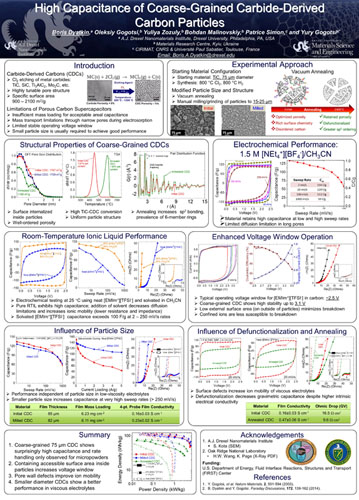 Most conventional supercapacitor electrode materials implement micrometer (1-10um) or nanometer (5-100 nm) size carbon particles with finely tuned porosities and high accessible specific surface areas. We present a novel internal surface area electrode with 50-100 um diameter particles, a finely tuned microporosity, a specific surface area in excess of 1800 m2/g, and high capacitive performance. We obtained these carbide-derived carbon (CDC) materials via Cl2 etching of large titanium carbide particles at 800°C and subsequently annealing them with H2 at 600ºC.
Most conventional supercapacitor electrode materials implement micrometer (1-10um) or nanometer (5-100 nm) size carbon particles with finely tuned porosities and high accessible specific surface areas. We present a novel internal surface area electrode with 50-100 um diameter particles, a finely tuned microporosity, a specific surface area in excess of 1800 m2/g, and high capacitive performance. We obtained these carbide-derived carbon (CDC) materials via Cl2 etching of large titanium carbide particles at 800°C and subsequently annealing them with H2 at 600ºC.
The carbon particles, which retained their coarse-grained structure, exhibited a narrow pore size distribution (dav=0.67 nm) that allowed for electrosorption of organic electrolytes and room temperature ionic liquids. Electrochemical testing using tetraethylammonium tetrafluoroborate (Net4+)(BF4-) solvated in acetonitrile showcased low ionic resistance, capacitance exceeding 120F/g (at 10mV/s), and high rate handling capability that allowed the material to store 60F/g at 1V/S charge/discharge rate.
We evaluated the performance of this carbon material using 1-ethyl-3-methylimidazolium bis(trifliuoromethylsulfonyl)imide ((EMlm+)(TFSI-)) in neat and solvated configurations. Despite the viscous nature of the electrolyte, the material displayed over 110 F/g charge storage densities in a solvent-free state and 140 F/g while solvated in acetonitrile at 10mV/s sweep rate. Furthermore, neat RTIL electrolyte extended the voltage window of the material above 3.0 V, displaying little electrochemical breakdown and improving the materials operational capability and energy density.
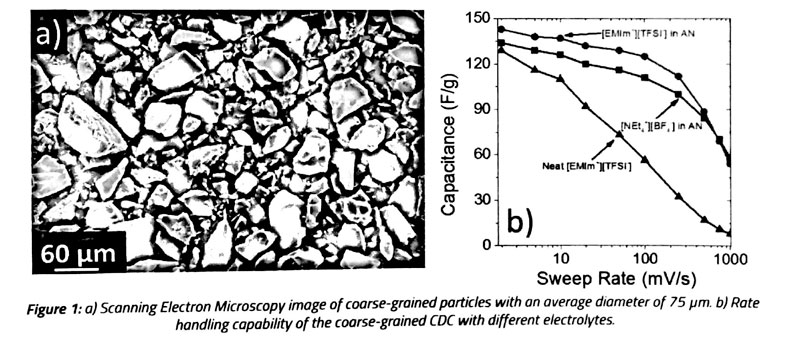
In addition to displaying high capacitance, dense, coare-grained carbon electrodes offer a less expensive supercapacitor fabrication approach and maximize the electrodes mass loading. We further explore the fundamental properties of his novel model system by mechanically milling or vacuum annealing the material to explore the influence of pore length and surface defects on fundamental properties of ion electrosorption in supercapacitors.
Source: www.iseecap2015.org



 Highlights
Highlights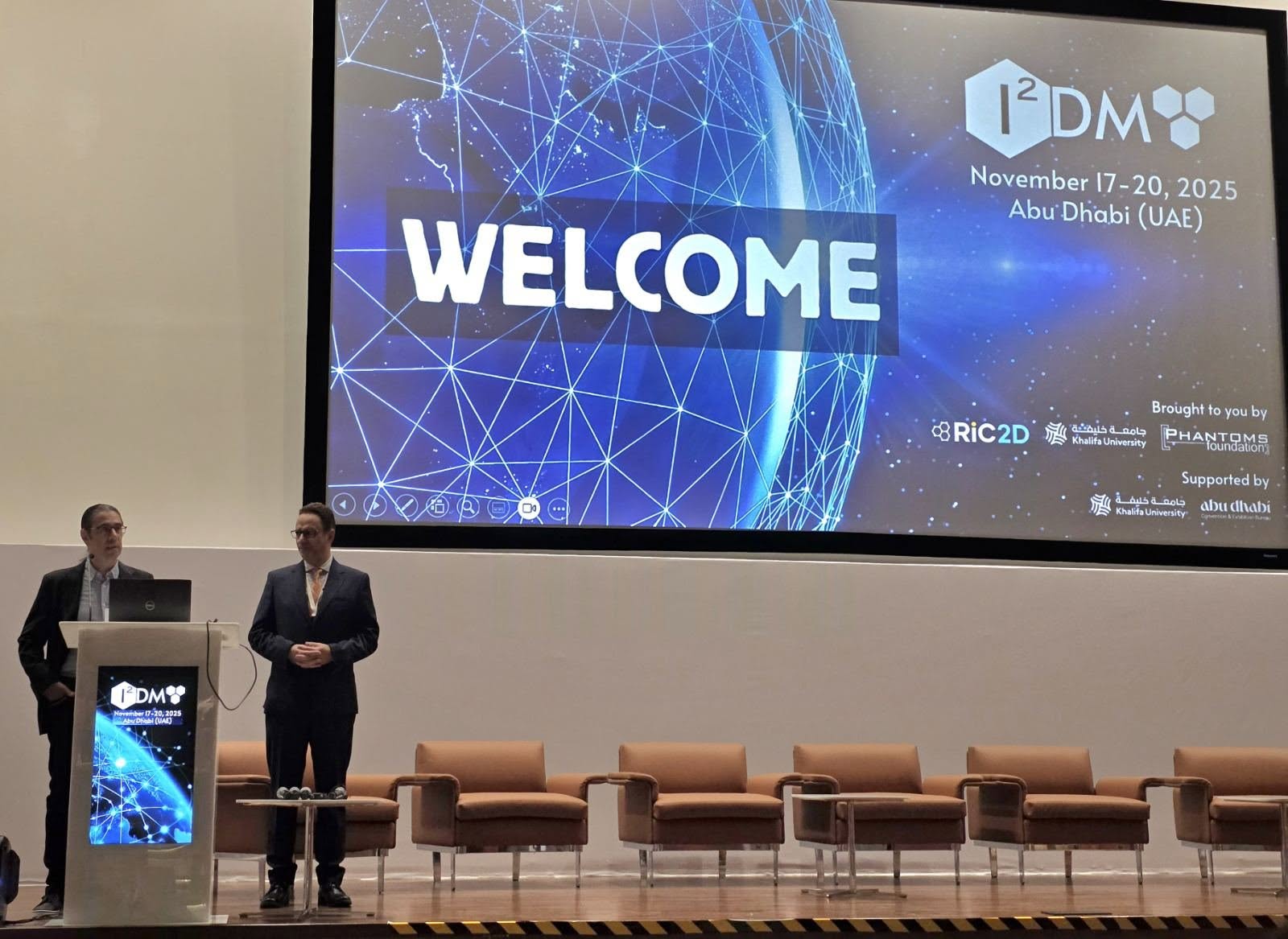 We are excited to share that our Carbon-Ukraine (Y-Carbon LLC) company participated in the I2DM Summit and Expo 2025 at Khalifa University in Abu-Dhabi! Huge thanks to Research & Innovation Center for Graphene and 2D Materials (RIC2D) for hosting such a high-level event.It was an incredible opportunity to meet brilliant researchers and innovators working on the next generation of 2D materials. The insights and energy from the summit will definitely drive new ideas in our own development.
We are excited to share that our Carbon-Ukraine (Y-Carbon LLC) company participated in the I2DM Summit and Expo 2025 at Khalifa University in Abu-Dhabi! Huge thanks to Research & Innovation Center for Graphene and 2D Materials (RIC2D) for hosting such a high-level event.It was an incredible opportunity to meet brilliant researchers and innovators working on the next generation of 2D materials. The insights and energy from the summit will definitely drive new ideas in our own development. Carbon-Ukraine team had the unique opportunity to visit XPANCEO - a Dubai-based deep tech startup company that is developing the first smart contact lenses with AR vision and health monitoring features, working on truly cutting-edge developments.
Carbon-Ukraine team had the unique opportunity to visit XPANCEO - a Dubai-based deep tech startup company that is developing the first smart contact lenses with AR vision and health monitoring features, working on truly cutting-edge developments. Our Carbon-Ukraine team (Y-Carbon LLC) are thrilled to start a new RIC2D project MX-Innovation in collaboration with Drexel University Yury Gogotsi and Khalifa University! Amazing lab tours to project collaborators from Khalifa University, great discussions, strong networking, and a wonderful platform for future collaboration.
Our Carbon-Ukraine team (Y-Carbon LLC) are thrilled to start a new RIC2D project MX-Innovation in collaboration with Drexel University Yury Gogotsi and Khalifa University! Amazing lab tours to project collaborators from Khalifa University, great discussions, strong networking, and a wonderful platform for future collaboration.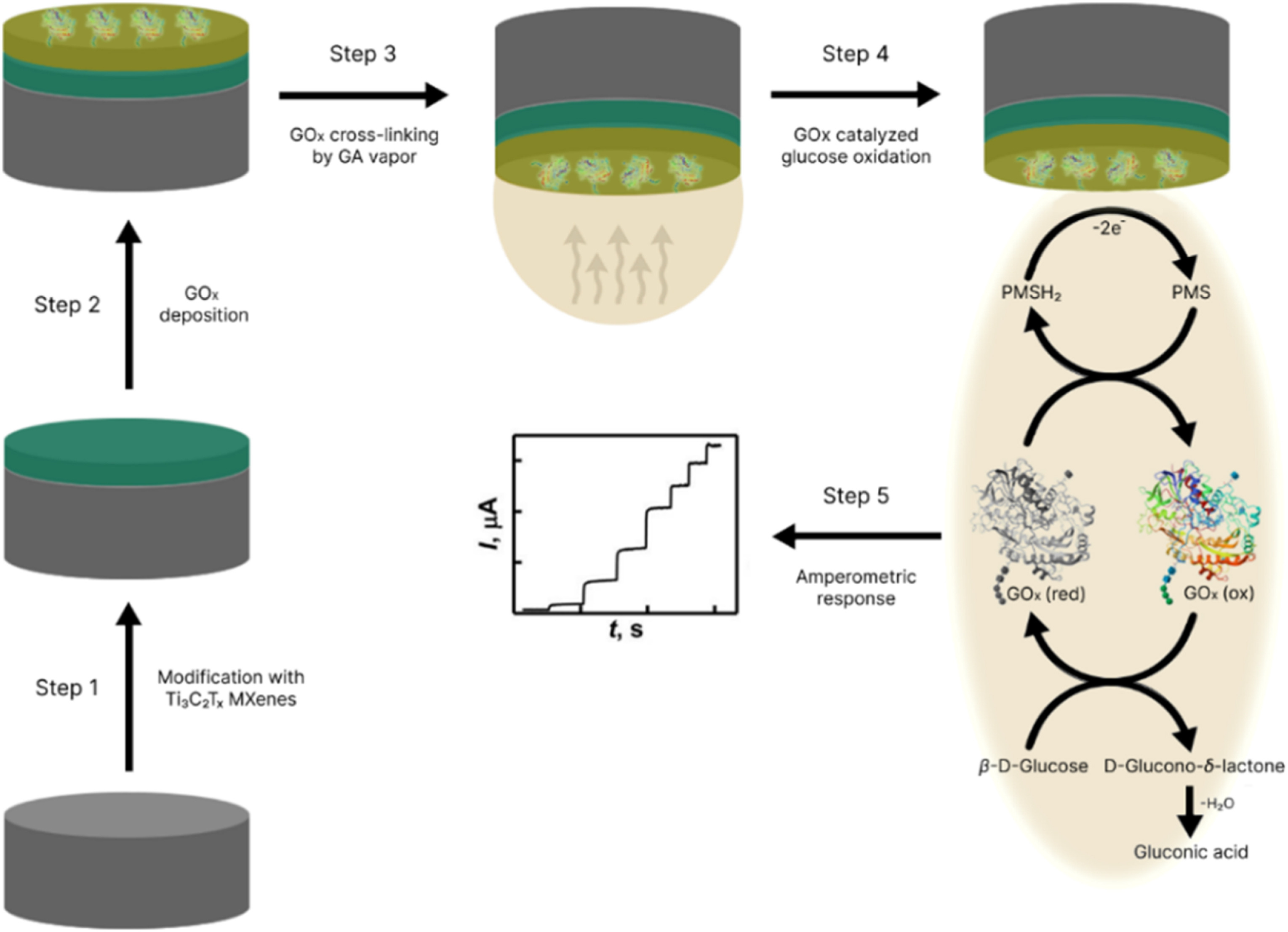
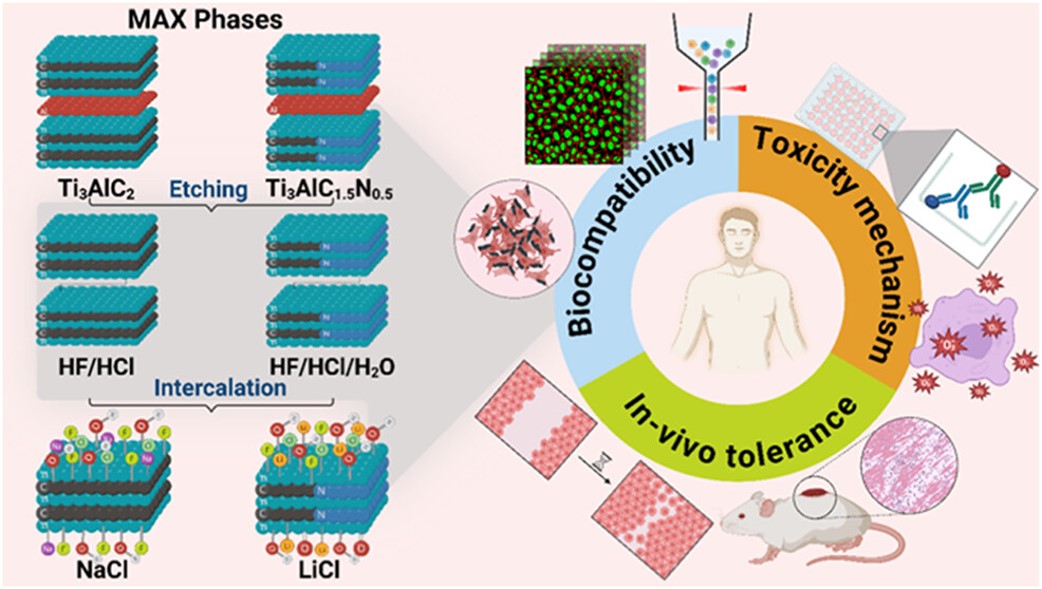 MXenes potential applications include sensors, wound healing materials, and drug delivery systems. A recent study explored how different synthesis methods affect the safety and performance of MXenes. By comparing etching conditions and intercalation strategies, researchers discovered that fine-tuning the surface chemistry of MXenes plays a crucial role in improving biocompatibility. These results provide practical guidelines for developing safer MXenes and bring the field one step closer to real biomedical applications.
MXenes potential applications include sensors, wound healing materials, and drug delivery systems. A recent study explored how different synthesis methods affect the safety and performance of MXenes. By comparing etching conditions and intercalation strategies, researchers discovered that fine-tuning the surface chemistry of MXenes plays a crucial role in improving biocompatibility. These results provide practical guidelines for developing safer MXenes and bring the field one step closer to real biomedical applications. An excellent review highlighting how MXene-based sensors can help tackle one of today’s pressing environmental challenges — heavy metal contamination. Excited to see such impactful work moving the field of environmental monitoring and sensor technology forward!
An excellent review highlighting how MXene-based sensors can help tackle one of today’s pressing environmental challenges — heavy metal contamination. Excited to see such impactful work moving the field of environmental monitoring and sensor technology forward!
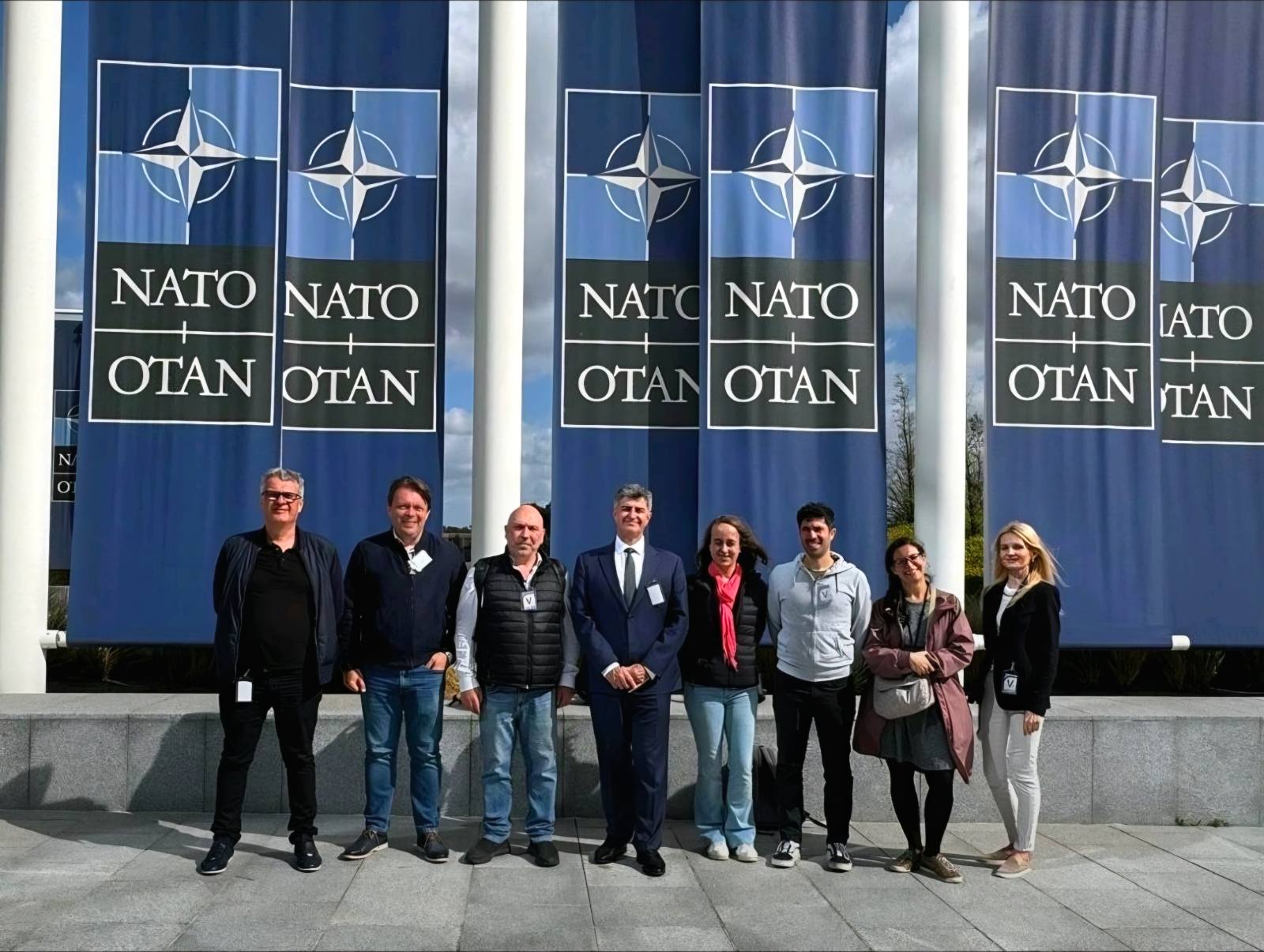 Carbon-Ukraine team was truly delighted to take part in the kickoff meeting of the ATHENA Project (Advanced Digital Engineering Methods to Design MXene-based Nanocomposites for Electro-Magnetic Interference Shielding in Space), supported by NATO through the Science for Peace and Security Programme.
Carbon-Ukraine team was truly delighted to take part in the kickoff meeting of the ATHENA Project (Advanced Digital Engineering Methods to Design MXene-based Nanocomposites for Electro-Magnetic Interference Shielding in Space), supported by NATO through the Science for Peace and Security Programme. Exellent news, our joint patent application with Drexel University on highly porous MAX phase precursor for MXene synthesis published. Congratulations and thanks to all team involved!
Exellent news, our joint patent application with Drexel University on highly porous MAX phase precursor for MXene synthesis published. Congratulations and thanks to all team involved!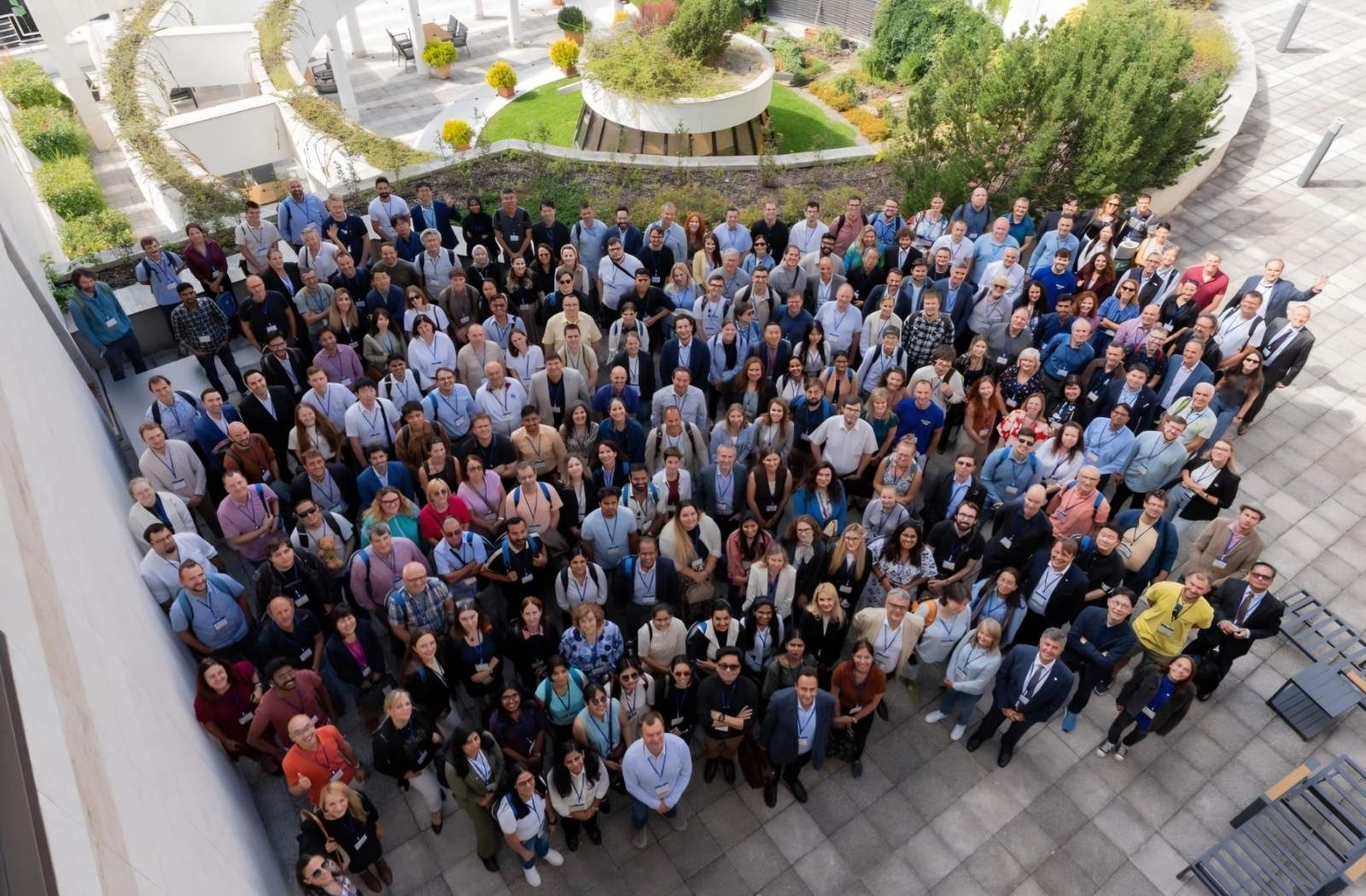 Our team was very delighted to take part in International Symposium "The MXene Frontier: Transformative Nanomaterials Shaping the Future" – the largest MXene event in Europe this year!
Our team was very delighted to take part in International Symposium "The MXene Frontier: Transformative Nanomaterials Shaping the Future" – the largest MXene event in Europe this year!  Last Call! Have you submitted your abstract for IEEE NAP-2025 yet? Join us at the International Symposium on "The MXene Frontier: Transformative Nanomaterials Shaping the Future" – the largest MXene-focused conference in Europe this year! Final Submission Deadline: May 15, 2025. Don’t miss this exclusive opportunity to showcase your research and engage with world leaders in the MXene field!
Last Call! Have you submitted your abstract for IEEE NAP-2025 yet? Join us at the International Symposium on "The MXene Frontier: Transformative Nanomaterials Shaping the Future" – the largest MXene-focused conference in Europe this year! Final Submission Deadline: May 15, 2025. Don’t miss this exclusive opportunity to showcase your research and engage with world leaders in the MXene field! We are excited to announce the publication of latest review article on MXenes in Healthcare. This comprehensive review explores the groundbreaking role of MXenes—an emerging class of 2D materials—in revolutionizing the fields of medical diagnostics and therapeutics. Read the full article here: https://doi.org/10.1039/D4NR04853A.
We are excited to announce the publication of latest review article on MXenes in Healthcare. This comprehensive review explores the groundbreaking role of MXenes—an emerging class of 2D materials—in revolutionizing the fields of medical diagnostics and therapeutics. Read the full article here: https://doi.org/10.1039/D4NR04853A. Congratulations and thank you to our collaborators from TU Wien and CEST for very interesting work and making it published! In this work, an upscalable electrochemical MXene synthesis is presented. Yields of up to 60% electrochemical MXene (EC-MXene) with no byproducts from a single exfoliation cycle are achieved.
Congratulations and thank you to our collaborators from TU Wien and CEST for very interesting work and making it published! In this work, an upscalable electrochemical MXene synthesis is presented. Yields of up to 60% electrochemical MXene (EC-MXene) with no byproducts from a single exfoliation cycle are achieved. Congratulations to all collaborators with this interesting joint work!
Congratulations to all collaborators with this interesting joint work!